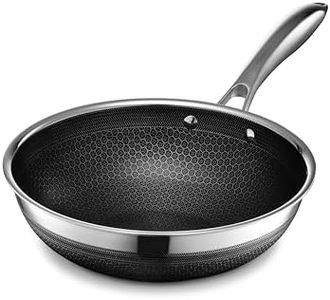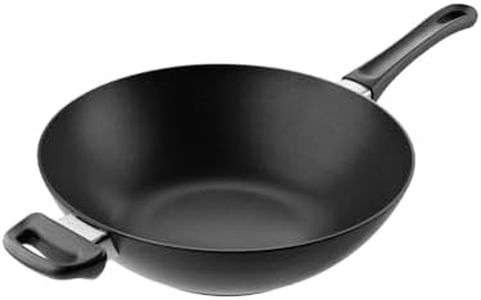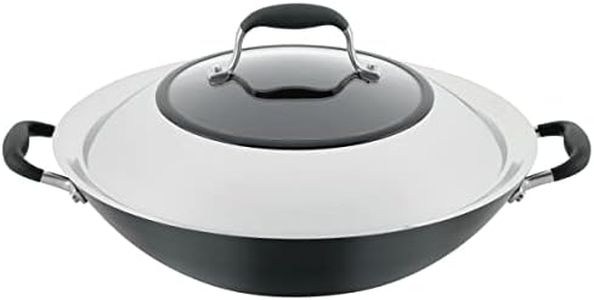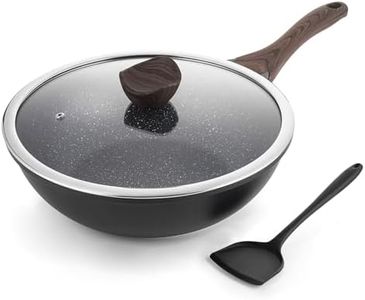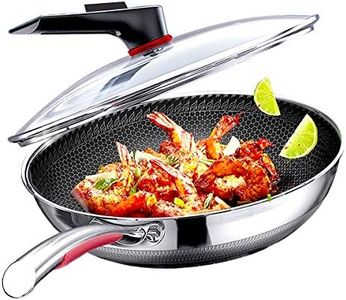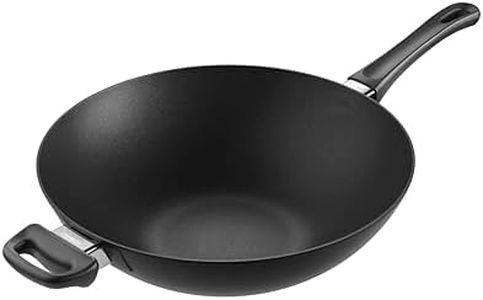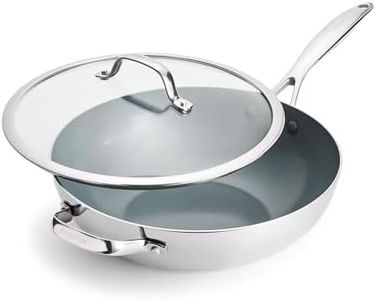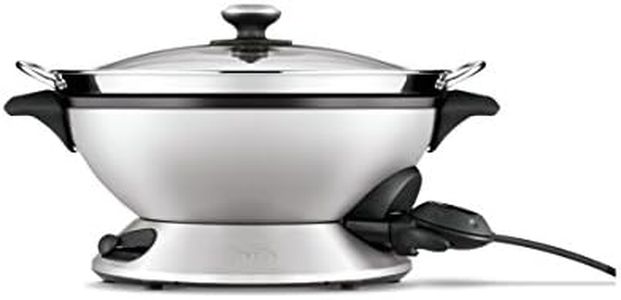We Use CookiesWe use cookies to enhance the security, performance,
functionality and for analytical and promotional activities. By continuing to browse this site you
are agreeing to our privacy policy
10 Best Nonstick Woks
From leading brands and best sellers available on the web.By clicking on a link to a third party's website, log data is shared with that third party.
Buying Guide for the Best Nonstick Woks
Choosing a nonstick wok can make a big difference in your cooking experience, especially if you love stir-fried dishes and want to avoid food sticking to your pan. There are several important features to consider to make sure you get a wok that fits your cooking habits, kitchen space, and comfort level. Understanding these features can help you decide which nonstick wok will best serve your needs and last longer.MaterialThe material of a nonstick wok refers to what the base of the wok is made from, under the nonstick coating. Common materials are aluminum and carbon steel. Aluminum woks heat up quickly and are usually lighter, making them easy to handle, while carbon steel provides better heat distribution and retention but is heavier. Your cooking style can guide you: if you want something easy to maneuver and fast-heating, aluminum is often better; if you prefer more even heating and heavier cookware, carbon steel is a good pick.
Nonstick Coating TypeThe nonstick coating is the layer that prevents food from sticking. It’s often made from PTFE or ceramic. PTFE coatings are widely used and known for their excellent nonstick performance and easy cleaning, while ceramic coatings are marketed as more environmentally friendly and free from chemicals like PFOA. If you cook delicate foods and value easy cleanup, PTFE might be best, but if you have concerns about chemicals, you might prefer ceramic. It's also important to know that no nonstick coating is permanent and all will wear out with time and use.
Wok SizeWoks come in various diameters, usually ranging from about 10 to 14 inches. A smaller wok (10-12 inches) is easier to store and better for cooking for one or two people. A larger wok (13-14 inches or more) gives you more cooking space, which is useful for family meals or entertaining. Choose a size that fits your typical batch size and the amount of stove space you have.
Handle DesignWoks typically have a long handle on one side, sometimes accompanied by a smaller side handle (helper handle). Long handles make tossing and stirring food easier, while a helper handle adds security when lifting a heavy, food-filled wok. If you often move your wok or make large meals, handles that feel sturdy and comfortable are important. Try to choose a wok with handles that feel secure and stay cool during cooking.
Shape and DepthNonstick woks are available in both round-bottomed and flat-bottomed styles. Round-bottomed woks give the most authentic stir-fry experience but may not sit properly on flat stovetops. Flat-bottomed woks are better for electric or induction cooktops and provide more stability. The depth affects how much food you can toss and stir—deeper woks help prevent spills when cooking for groups. Base your pick on your stove type and the style of cooking you plan to do.
Lid InclusionSome woks come with a lid, and others do not. A lid helps when steaming vegetables or simmering, expanding the range of dishes you can prepare. If you like to use your wok for more than just stir-frying, consider models that include a well-fitting lid.
Oven and Dishwasher SafetySome nonstick woks are oven-safe up to certain temperatures or can be put in the dishwasher for easy cleaning. If you want the flexibility to finish dishes in the oven or value fast cleanup, check for these features. Always check the manufacturer’s guidelines so you don’t damage the coating.

